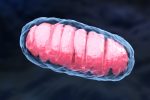Scientists Identify PIAS2 Protein as Driver of Parkinson’s Dementia

Matej Kastelic/Shutterstock
PIAS2, a protein that suppresses the immune interferon (IFN)-beta signaling, is found at higher-than-normal levels in neurons of sporadic Parkinson’s patients, particularly in those with Parkinson’s disease dementia (PDD), a study shows.
Overproduction of this protein was sufficient to cause PDD-like motor and cognitive symptoms in mice, while its suppression reversed these deficits.
PIAS2’s damaging effects were found to be associated with a blockage of mitophagy, the process of recycling damaged mitochondria (which normally supply energy to cells), and increased oxidative stress.
Oxidative stress is an imbalance between the production and clearance of potentially harmful reactive-oxygen species, which can result from energy production.
“Just like when people eat, cells take what they need and get rid of the rest waste products,” Shohreh Issazadeh-Navikas, PhD, the study’s senior author at the Biotech Research and Innovation Centre, University of Copenhagen, in Denmark, said in a press release. “But if our brain cells have this specific kind of signaling blockage, it means that the powerhouse of the cell — mitochondria — cannot get cleaned up after being damaged.”
“We show that a high accumulation of the PIAS2-protein is what is causing the blockage in the [IFN-beta] pathway, which should have activated the processes responsible for removing damaged protein and mitochondrial garbage,” she said.
Given that Parkinson’s is associated with both mitochondrial dysfunction and oxidative stress, these findings suggest that PIAS2 is a driver of the disease and thereby a promising therapeutic target for Parkinson’s.
The study, “PIAS2-mediated blockade of IFN-β signaling: a basis for sporadic Parkinson disease dementia,” was published in the journal Molecular Psychiatry.
While sporadic Parkinson’s disease “does not pass through familial inheritance, a genetic predisposition, in combination with environmental factors, could drive its [development],” the researchers wrote.
If this genetic predisposition is associated with mutations in several genes of the same signaling pathway, the link between each gene and sporadic Parkinson’s might be weak and go by undetected in large conventional genetic association studies with strict thresholds.
In a previous study, Issazadeh-Navikas’s team found that lack of IFN-beta — a molecule involved in antiviral immune defense and in the suppression of neuroinflammation — led to the development of age-dependent PDD-like features in mice.
These included toxic accumulation of the alpha-synuclein protein and death of dopamine-producing neurons, hallmarks of Parkinson’s, in association with motor and cognitive symptoms.
To assess whether mutations in several genes of IFN-beta signaling were associated with sporadic Parkinson’s and PDD, the researchers analyzed four datasets of neuronal gene activity in patients and healthy individuals through methods that allow the detection of subtle genetic associations.
Results showed that the activity of IFN-beta signaling-related genes was significantly dysregulated in sporadic Parkinson’s patients, especially those with dementia, relative to healthy individuals.
Particularly, the activity of genes associated with IFN-beta signaling activation was reduced, while that of negative feedback regulators, such as the PIAS2 gene, was increased, indicating that the signaling pathway was blocked. IFN-beta signaling normally activates the PIAS2 gene, which provides the instructions to produce PIAS2, an enzyme that in turn suppresses the signaling, in a process called negative feedback.
Moreover, the researchers identified mutations in several of IFN-beta-related genes, including PIAS2, in people with sporadic Parkinson’s.
“Every part of our body needs to be regulated,” Issazadeh-Navikas said, noting that after an IFN-beta-inducing insult is resolved, PIAS2-associated blockage “should stop and go back to normal,” but “that does not seem to be the case in patients with Parkinson’s Disease.”
These findings prompted the researchers to evaluate the effects of overproducing PIAS2 in nerve cells of healthy mice.
Data showed that excessive neuronal levels of PIAS2 alone were sufficient to result in PDD-like motor and cognitive function declines that were associated with loss of dopamine-producing neurons in these mice.
Further analysis revealed that PIAS2 overproduction blocked mitophagy, led to the accumulation of damaged mitochondria, and increased oxidative stress — all features associated with Parkinson’s. It also was associated with problems in neuronal development and activity.
In turn, suppressing PIAS2 in the brain of mice lacking IFN-beta rescued PDD-like symptoms, restored mitochondrial recycling, and reduced oxidative stress, implicating PIAS2 as a driver of Parkinson’s development.
“These data verify that high neuronal PIAS2 levels correlate with cognitive impairments, similar to their association with dementia in PDD patients, and that eliminating neuronal PIAS2 reverses these deficiencies and neurodegenerative processes,” the researchers wrote.
As such, PIAS2 has the potential to be “an exciting target for future therapeutic approaches in [Parkinson’s],” the researchers wrote.
These findings also suggest that IFN-beta signaling pathway “should be evaluated for potential roles in the other forms of familial Parkinson’s Disease that we have not studied here,” Issazadeh-Navikas said.
The researchers now plan to investigate how the IFN-beta signaling pathway contributes to neuronal health and survival, and how its dysregulation can lead to neuronal cell death.








